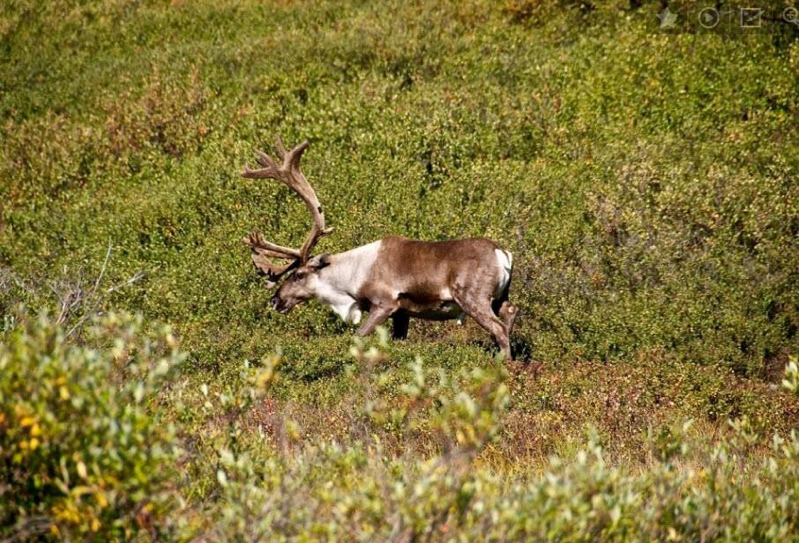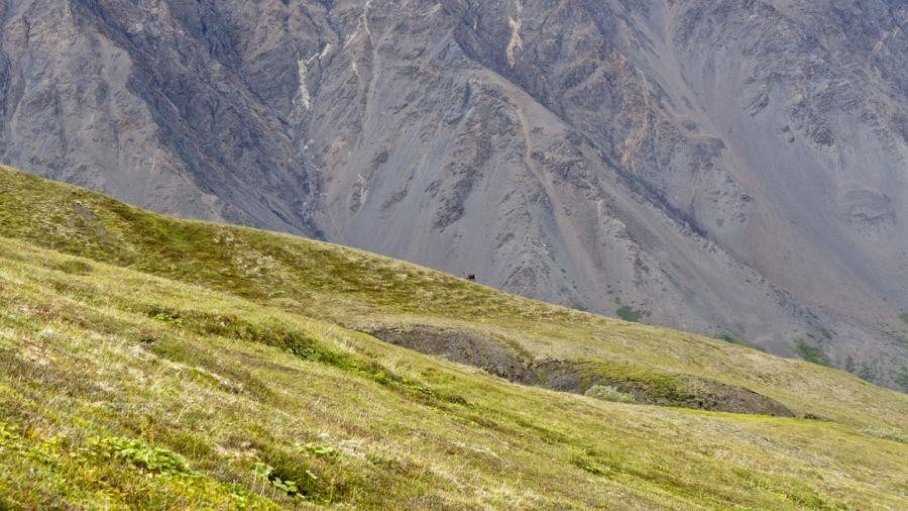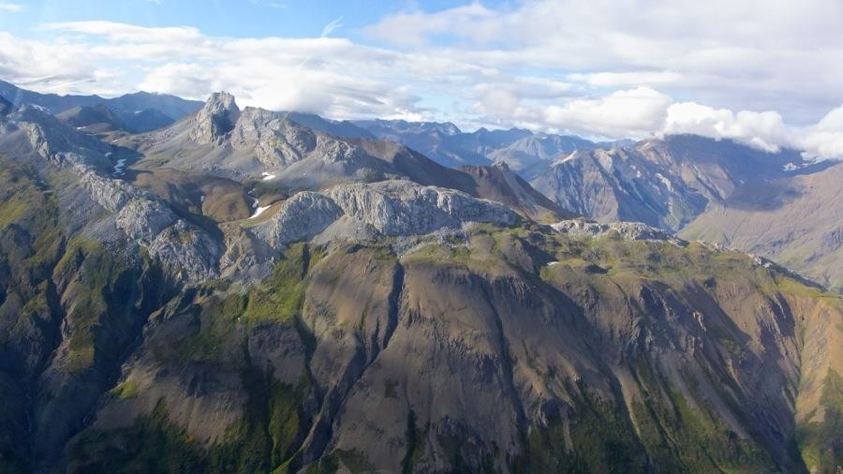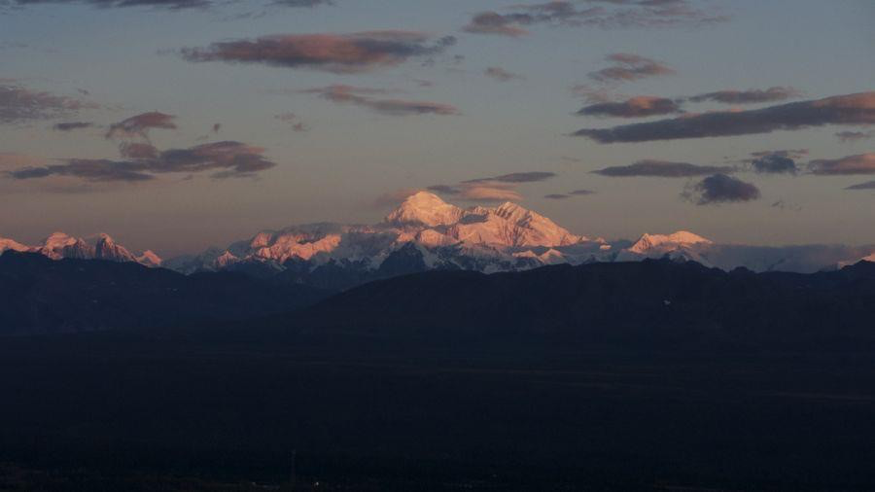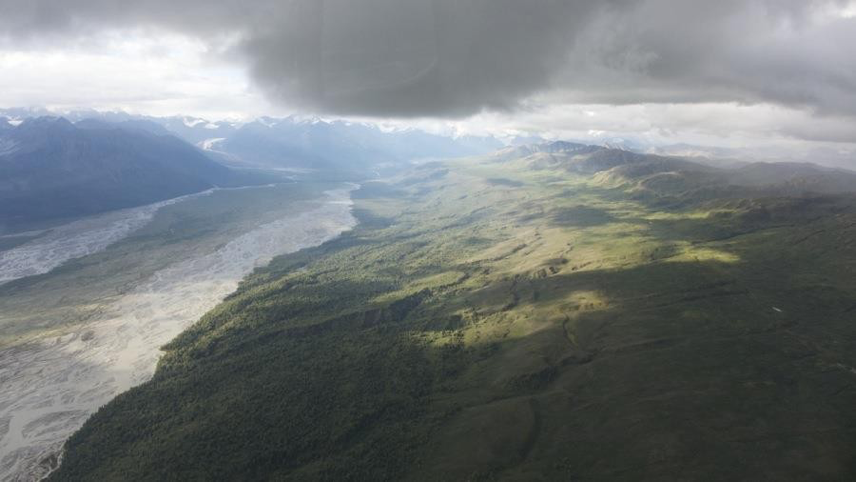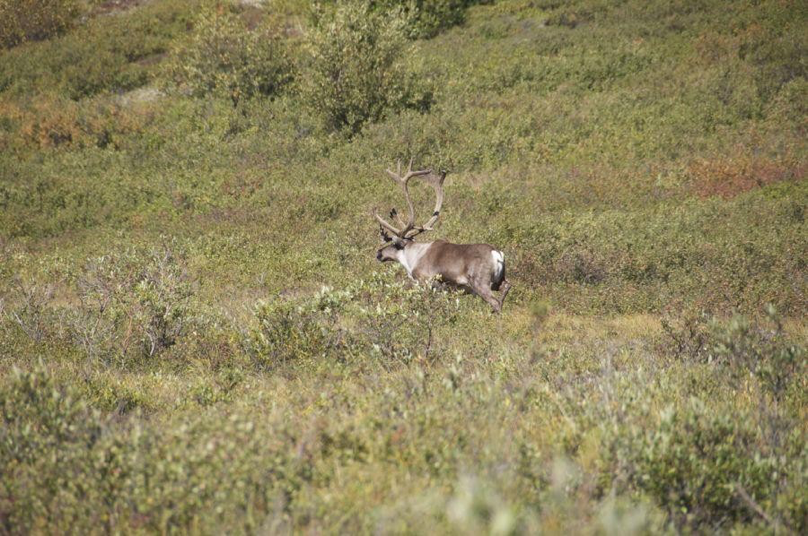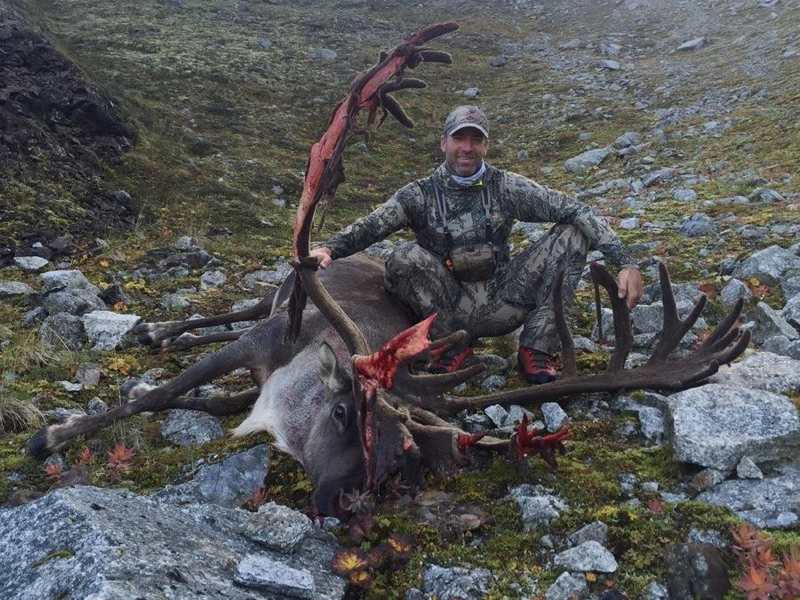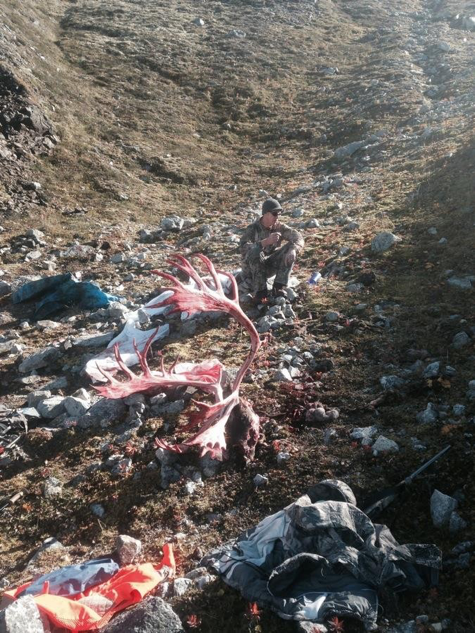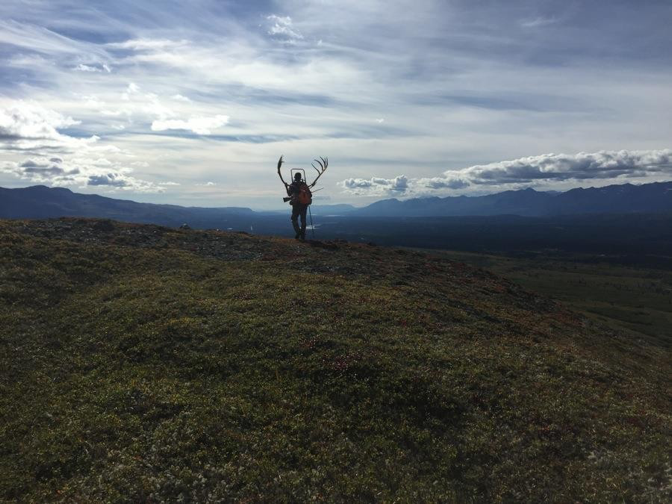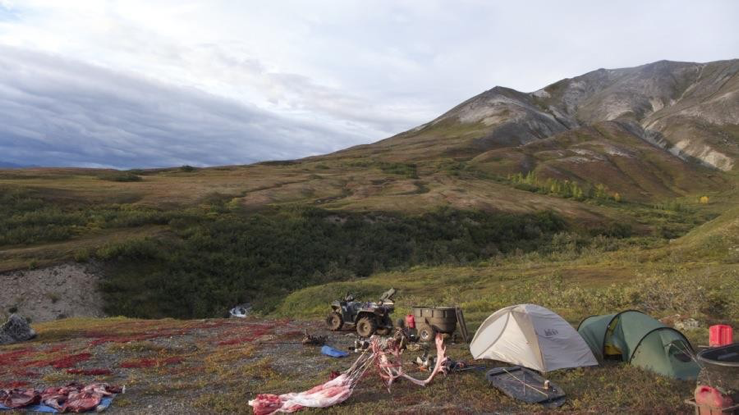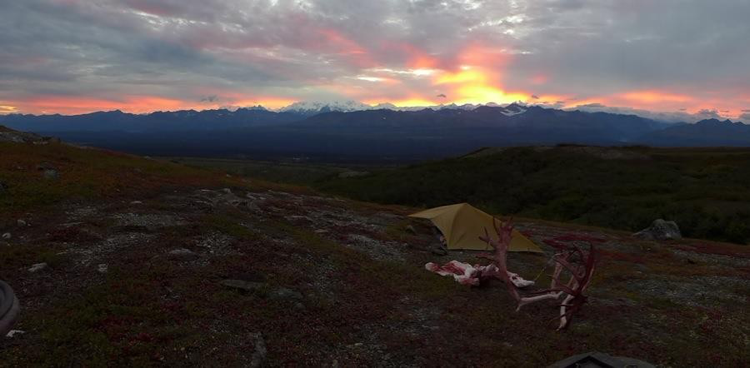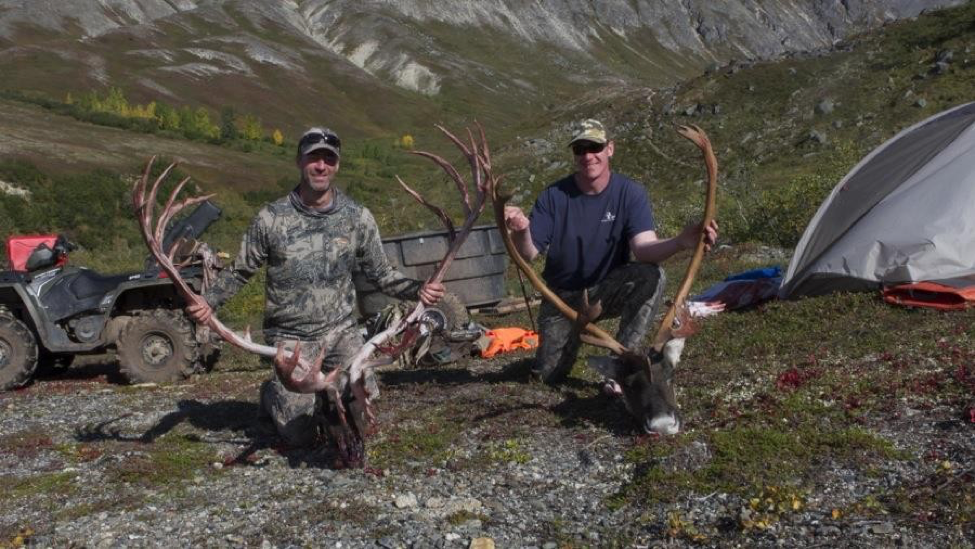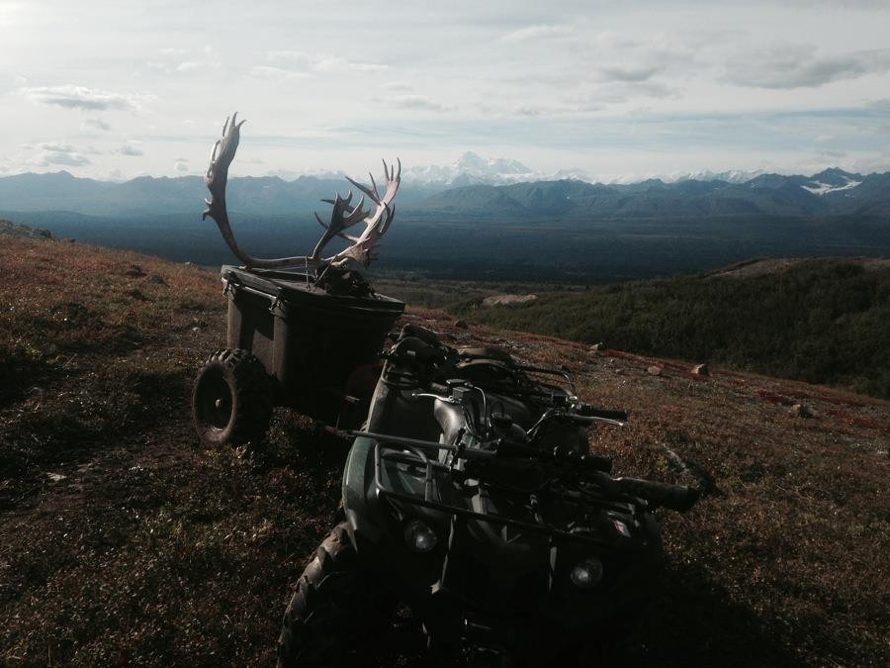Perseverance – steadfastness in doing something despite difficulty or delay in achieving success.
“Tis a lesson you should heed:
Try, try, try again
If at first you don’t succeed,
try, try, try again.”
Success is rarely achieved without first embracing failure or at least the possibility of failure. In my book, failure is always an option and success is never guaranteed, no matter how hard you try. There is such a thing as impossible and there is no such thing as 110 percent. In thinking back on some of what I consider my most memorable and meaningful successes, few have come without a substantial investment of time and effort and most have been at the end of a relatively long string of failures. With greater investment comes greater reward, and failing has taught me far more than succeeding ever has. This will be a short story about perseverance and the rewards that can come from trying again.
Chapter 1
Caribou are nomads of the north, Alaska’s high plains drifters, monarchs of the mountains, and wanderers of the woodlands. Being a highly migratory species, you can find caribou in just about every habitat in Alaska at some point throughout the year. Many herds travel hundreds if not thousands of miles from their traditional calving grounds to their preferred summer haunts in the high alpine, away from the bugs.
It is not uncommon for significant herds to change their migration routes almost overnight and for no apparent reason whatsoever. Much like anadromous fish, when they are “running” they can be abundant and when they aren’t you might be convinced there is not a single caribou in Alaska. They can appear out of nowhere at nearly any time.
Though I’ve spent a lot of time in the places these animals call home and have been mingling with them now for years, this was the first year I made trying to hunt one a priority, and as the season approached my anticipation grew. My wife and I welcomed our second child into the world in August and I knew my hunting time would be hard to come by this fall. I had already told my hunting partner that I may not be able to make it and to feel free to arrange other plans to preserve his preference for a longer trip in the prime season. In the back of my mind I was still hoping I’d be able to beg and plead a few days away to be able to roam the hills in search of both a memorable experience and good groceries.
As luck would have, it my begging and pleading landed me two days to hunt during opening weekend. The caribou tag I’d drawn was for a very popular road-hunting area in the state: the Denali highway, and the state gives out nearly 15,000 tags for this area. The Denali can be an absolute madhouse at times, with scenes resembling Mad Max: Fury Road on your average weekend. I had about as much interest in participating in that scene as I would have in getting my wisdom teeth yanked again. As such, I did a bit of homework on some lesser-known areas in the unit and uncovered some rumors about small bands of more resident animals in a couple of areas that were relatively “inaccessible” by comparison. This was our Plan A: head into a small sub-range of mountains and try and make the most of a small window of opportunity by going higher and farther than some of the competition may be willing. That strategy has served me well in the past and I hoped it would do so again.
Chapter 2: A Lesson in Humility
“And this is what happened, and this is why the caribou and the wolf are one; for the caribou feeds the wolf, but it is the wolf that keeps the caribou strong.” — Farley Mowat
“All conservation of wilderness is self-defeating, for to cherish we must see and fondle, and when enough have seen and fondled, there is no wilderness left to cherish.” — Aldo Leopold
Hunting is somewhat of a moral struggle for me. The value that wild places and wild things have in my life can’t really be put into words or be defined in simple terms. How do you put a price on the essence of being, the meaning of life, and the things that have made you who you are? I abhor the thought of destroying something beautiful, but I do it just the same in the name of sustenance and meaningful experience. Like the wolf, the pursuit of wild game in wild places and the fruits of these labors keep me strong, but what do I have to offer in return? This love affair is certainly one-sided. On one hand the thought of doing damage to things that mean the world to me is unthinkable. On the other hand, I believe one of the most pure forms of human existence is a subsistence lifestyle, living off of the land and the wild creatures that inhabit it.
Don’t get me wrong; I’m no purist, but knowing where my food comes from and providing for my family is a big part of what drives my desire to harvest. I also enjoy a good adventure now and then, which is certainly part of the draw as well. So off for an adventure with the hope of harvesting we went.
Bags packed the night before and on the road at the end of a long work day, our plan was to make it to a decent camping spot near treeline before dark and do a bit of glassing to pick out an objective for an early wake-up the next morning: opening day. The weather forecast was marginal at best. Getting wet wasn’t the biggest concern, but rather, not being able to see through clouds in the high country was. From the trailhead, we rambled a handful of miles until the four-wheeler trail ran out at treeline, so we pitched tents. With less than an hour of light left, I was keen to get some glass on the land to see if we had any hairy neighbors that might make for a worthy morning objective.
Before I could get the scope set up, I picked up a small band of caribou on a distant ridge some 5-6 miles away. Being new territory with a lot of unknowns, it was really exciting to know that we were in the game right out of the gates. The first animal I saw through my binoculars was a magnificent bull, perhaps one of the finest I’d ever seen. Even from this distance I could tell he was huge. He was separated from the rest of the small herd, which appeared to be made up of a handful of small- to medium-sized bulls and cows, perhaps numbering twelve in total. After canvassing the rest of the terrain around and above our camp, nothing else of interest jumped out at us, and these animals had our full focus.
Their location, though, was a bit of a conundrum. To get to them, we’d have to descend a few thousand feet, cross a drainage of unknown size or depth, and in doing so re-enter the dreaded “green zone;” that is, the alder- and devil’s club-choked bushwhacking nightmare below treeline. As the last of the light faded on the land we formed a plan. Wake up, wander up the hill for a while to see if we would find something closer and easier, and if we couldn’t, we’d make a play on the small herd we hoped would still be there in the morning.
As I tried to force myself to sleep I couldn’t shake the vision of that big bull silhouetted against the distant skyline. I wasn’t hunting antlers by any means and I fully intended to shoot the first bull that I happened across if I was lucky enough to stumble into one, but this bull was a special animal, and he haunted the few dreams I had that fitful and restless night. Dawn broke gray. The cloud ceiling was above the hilltops but not by much. There was an ominous energy in the air.
Up well before light, we brewed up and choked down lukewarm, crappy trail food before setting off up the hill at first light. Only a mile or two from camp it became clear that things were not improving on the weather front. Wind picked up, clouds came down, and soon the sideways rain was forcing itself through every weakness in our layering systems. Lenses fogged, fingers numbed, and there wasn’t any question about whether continuing up was a good idea. We were inside the ping pong ball and we weren’t going to find more animals unless we happened to trip across them.
The caribou we’d seen across the valley had still been visible that morning, but by now we were just as likely to see Russia as the small herd a few miles away. At least we knew where they were and generally how to get there. With some reluctance we started scrubbing elevation towards the creek a few thousand feet below. Before long we re-entered the green zone, and it was bad—perhaps as bad as I have encountered. It took three hours to cover a quarter of a mile, pushing our way downhill to the creek through jungle so dense that at times my feet weren’t touching the ground as I thrashed and cursed for every inch of progress. Thoroughly soaked to the bone, with streams of water coursing down my body and filling up my boots, we reached the creek. It was wade-able, but barely. On the other side we faced the same 2,000 feet of steep bush-bashing, but in the opposite direction, to get back out of the green zone and into the open where travel would ease and allow us to maneuver towards our objectives.
It was soul-searching time. Could we do this? Yes. At least that was my perspective. But what would it cost? We were working towards spent and the hard part was yet to come. Getting through the terrain that we had already conquered was brutal and we had empty packs. Making our way back through this stuff, with full loads and antlers catching every twig and branch along the way seemed horrific at best. I estimated that it would take three days to move two animals back to our camp from where we were likely to find them, and we didn’t have that time—if time was even the limiting factor.
So at the bottom of the valley, drenched and dejected I threw in the towel. I tucked my tail and turned back, with the sour taste of failure in my mouth. Was it the right call? I knew it was possible, but it certainly wasn’t practical. Is this just me getting old and soft or is my gut saving me from biting off more than I can chew? I’ve never liked the feeling of doubt and uncertainty, and I was drenched in that as much as I was the rain that seemed to be getting heavier by the minute. Back at camp we sulked in our tents, hoping for a break in the weather that never came.
And that was it. This limited window of opportunity was over for me. My one chance to hunt a caribou for the year had come and gone and I had failed. The sun had set on my hopes, or had it?
Chapter 3: Redemption
One last cast, one more bend in the river, one more curve in the trail, or one more ridge to cross before we camp. That little bit of extra effort has paid off too many times to count. In many cases it’s not even a monumental feat but rather a few more steps just to peer around one more corner before the day is done. Last year on my first Dall sheep hunt, my partner and I crawled out of our sacks after a warm dinner on somewhat of a whim. We’d all but decided to call it a day but there was a little light left and we hadn’t seen into the next valley yet. From a vantage point a short stroll above our tent, we picked out two sheep we were almost certain were rams. Too far away and too dark to be certain, we at least knew there was a possibility. Without that five-minute walk at dusk, we never would have seen these animals and the most memorable hunt of my life may never have panned out the way it did on the following day. Perseverance doesn’t always have to be a herculean effort against all odds; it can take far more simple forms such as not quitting until the end, not giving up until the task is complete, or not letting a moment slip by unproductively. Back to the caribou…
After dragging our soggy, sorry asses back home and re-entering the real world, I wasn’t happy. When I look at things from the 30,000-foot level my life is great, and I am blessed far beyond what I deserve. Still, I can’t help but be preoccupied with failure. I knew that with such a small window to hunt we would have had to not only get lucky to find some animals within range, but then everything would have had to have gone perfectly with the hunt, pack out, and return trip to the trailhead. My mindset should have been that failure was a lot more likely than success, but of course that isn’t usually the way hope and anticipation work. I’ve never been good at expectation management.
I couldn’t let it go and I had to try again. Even contemplating the notion riddled me with guilt. My wife, being the saint that she is, was wrangling two kids—one of whom was less than a month old—while I worked and now asked for another two-day window to go hunting. I managed to re-configure work and personal life to come up with another day-and-a-half. If we were doomed to fail for lack of time on the previous trip, this itinerary certainly wasn’t going to improve our odds, but it was better than nothing.
In the week since our first try, I couldn’t stop thinking about the big bull, the monarch of the mountain. I refused to believe that there wasn’t a better way to get to where he lived. I spent hours poring over maps and satellite images, and searching for anecdotal reports of access into the area from local knowledge. What I came up with was a few sketchy rumors about another rough trail system that led into the southern end of this small group of mountains. The caribou that we had seen were at the far north end with a handful of miles separating the two zones; at least that’s what my best guess had me believe. Though the hiking distance appeared to be longer, there was one major difference: if we were able to access this terrain from the south, there would be no major drainage in our way and most of our travel should be well above the green zone.
How steep was it? Were the animals still there? Did this trail even exist, and if so, where did it go? With all of these unknowns and a healthy helping of doubt we cast off again, this time in the middle of the night hoping to find a trailhead at first light and start the uphill ramble. The weather had improved over the course of the week and it wasn’t raining, but there was a fairly thick layer of low-elevation clouds obscuring everything around us.
I hoped that with warming temps the clouds would dissipate; if they didn’t, we’d be back in the ping-pong ball with nothing to see or hunt. Somewhere not far from where I’d hoped a trail would materialize, we found something that looked promising and we launched our four-wheeler with a plan similar to the last one: follow the trail until it ran out, drop our overnight gear, and continue by foot.
Things worked out far better than I hoped, with the trail getting us very close to a ridge I picked out on maps that seemed to lead us up and over the top from south to north, and into where we had seen the animals. The distances seemed quite manageable and the terrain, though steep, was still fairly reasonable from what I could see. The cloud layer was thinning by the minute, and I couldn’t unpack and repack fast enough. I was pumped and determined not to waste a minute.
Soon enough tents were pitched, gear was stowed, and we were trekking across open tundra towards the access ridge. The going was easy (by comparison) and the sun came over the horizon just as the terrain started to ramp up. The day was shaping up to be a perfect 10, but one huge nagging unknown hung in the air: would we find the animals? It had been a week since we’d last seen them and by now they could be in a different country.
After an hour we gained a low saddle in the ridge that offered a view down the other side towards the northern end of the escarpment. I’d been pushing the pace pretty hard thus far and had a few minutes to chill while my partner caught up. I had a seat on the ridge and started glassing the valley below for signs of life. Caribou. One lone, very large bull appeared a mile away. It had to be him. He was by himself, giant, and not too far from where we had last seen him. What were the chances? I was jacked but he was a long way off with a lot of convoluted terrain between us.
My partner caught up and I pointed the animal out. We agreed, it was the same bull. Redemption might be a possibility after all. We needed a strategy. We were about a thousand feet above him and a mile away. I watched him feed for 15 minutes, and though he was meandering, it seemed like he was favoring an uphill trend. My first thought was to drop down and come across at his level, hoping for a 300-yard shot before he busted us. After watching him for a bit longer, he continued his upward path and I changed my mind. We had to stay high.
Before we had the chance to close the gap, he could out climb us so far that we’d never catch up. Our only option was to top out on the peak we were currently climbing, run a long ridge around the top of a small valley, and then hunt down to where he was working his way up on the other side. Unfortunately this meant losing sight of him for who knows how long; maybe forever.
With the plan settled, we began hustling, moving up through scree and talus just below the crest of the ridge. The view from the top of the peak was amazing, but I didn’t want to pause long enough to enjoy it. The long ridge from the summit I hoped would continue around the head of the basin did just that, and minus a few steep bits of scrambling, it was straightforward and relatively direct. We hustled as fast as our legs and lungs would allow us until we circled the basin and connected with the broad ridge the bull had last inhabited nearly two hours before.
We dropped our gear and went into stealth mode, slowly picking our way down the sloping terrain with no idea what lay below. Thirty minutes into this cautious maneuver, I came to a rock outcropping that obstructed the view below. I asked my partner to hold and I crouched and slunk to the rocks until I could see over the edge. There he was, 70 yards away and perfectly broadside.
He busted me immediately and I had no time to think. With scope covers open and a round in the chamber I raised my rifle, clicked the safety off, and eased onto the trigger with my crosshairs moving more than I would have liked, owing to a pounding heart and heaving lungs. I won’t say I was entirely unprepared or caught off guard, but I was in a state of disbelief that after several miles and a few hours of not having seen him I had popped out right on his nose.
My first round hit him high but he was down immediately, and dead but didn’t yet know it. I added another one for good measure and he was done. My partner, having been a few paces behind me and looking at a bear in the opposite direction was beside himself. “What the hell just happened?” he yelled. “Did you kill the caribou? Did you shoot at the bear? What happened?”
In an instant he was at my spot, and saw the animal and started freaking out. Being entirely consumed with what had just transpired I hadn’t paid much attention to anything but getting the killing done. He was huge; the biggest caribou I’d ever seen. As we picked our way down to him his size became apparent and I knew he was a special beast. He’d tumbled down into a small drainage and as we reached him the sun lit the place up and I took it as an omen. It seemed like a good time to smile, so I paused and did just that.
The easy part was over and there was significant work to be done. We were three miles from camp and a couple of thousand feet above the valley floor with a lot of rugged traversing to get back to where we started. I won’t bore you with the details as I have rambled on long enough, but the work was pretty real. We carried our gear and the animal out Denali-style; that is, triple-carrying loads. We’d move a third of the load half a mile ahead, come back for the 2nd third, and then return for the final third, each load weighing 60-85lbs. And so we shuffled into the night. Finally back at camp as the sun crept low, we were greeted with one of the finer sunsets behind Denali and the Alaska Range I have ever seen. A fitting end to a remarkable day.
But that wasn’t quite the end. My partner still had a tag to fill and we had a whole day of hunting left. It was excruciating to pull our sore, blistered, and beaten bodies out of the fart sacks in the morning but we managed to do it, barely.
About a mile from camp on the valley floor we jumped another decent bull and my partner managed to drop it with one shot while it was running at 230 yards. It was a pretty remarkable shot and another awesome animal. Compared to the day before the pack back to camp was cake and we were on the trail home in the early afternoon with ear-to-ear grins.
Those grins still haven’t worn off.
Post script: My bull wound up scoring #27 on the SCI list at 490 1/8. I had it scored for B&C but don’t remember the score at the time of this publishing. He ended up somewhere around #25. Undeniably, a remarkable bull taken on a remarkable trip.


